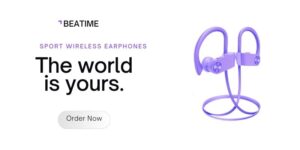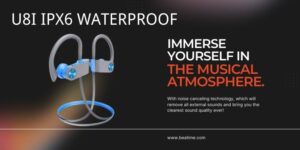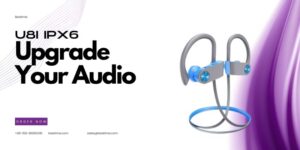
The second half of 2025 is filled with opportunities for businesses to maximize sales and capture new market share. For B2B buyers, strategic planning is the key to taking advantage of these opportunities while avoiding the pitfalls of missed deadlines and stockouts. With significant global shopping events and seasonal demand spikes ahead, early preparation will ensure your supply chain runs smoothly. Key challenges in the B2B supply chain1 add further complexity to this process.
In this guide, we’ll outline the key dates for 2025, provide actionable tips for successful product planning, and share strategies to align your supply chain with peak shopping periods. Let’s dive in.
Table of Contents
Why Early Planning Is Crucial for B2B Buyers
Unlike B2C transactions, the B2B supply chain involves multiple layers of complexity, including extended lead times, bulk orders, and international logistics. Failing to plan ahead can result in costly delays and lost revenue.
1. Avoiding Production and Shipping Delays
The typical B2B production timeline includes:
- Communication with suppliers: Confirming specifications and pricing (7-15 days).
- Sampling: Developing and approving product samples (7-15 days).
- Production: Manufacturing the goods (25-35 days).
- Shipping: Transporting goods to the destination (15-30 days). Best practices for international shipping logistics2 can minimize potential delays.
Any delay in these stages can disrupt your entire schedule, especially during high-demand periods like Black Friday or Christmas.
2. Capturing Seasonal
Shopping peaks during specific events such as Amazon Prime Day, Black Friday, and Diwali. Why is Amazon Prime Day significant for sales?3 Understanding the importance of these events can help businesses capitalize on consumer demand.

Key Dates for 2025 and Planning Deadlines
Below is a detailed table of major shopping events and their corresponding deadlines. Use this timeline to ensure your products are ready in time for peak demand.
| Country | Event | Event Date | Latest Contact Date with Suppliers |
|---|---|---|---|
| United States | Amazon Prime Day | Mid-to-late July | Mid-April |
| Labor Day | September 1 (first Monday) | Early June | |
| Black Friday | November 28 (fourth Friday) | Early September | |
| Christmas | December 25 | Mid-September | |
| Germany | Christmas Shopping Season | December | Mid-September |
| Black Friday | November 28 (fourth Friday) | Early September | |
| United Kingdom | Amazon Prime Day | Mid-to-late July | Mid-April |
| Black Friday | November 28 (fourth Friday) | Early September | |
| Christmas | December 25 | Mid-September | |
| Japan | Golden Week | Late April to early May | Mid-February |
| Year-End Shopping Season | December | Early September | |
| Canada | Canada Day | July 1 | Early April |
| Black Friday | November 28 (fourth Friday) | Early September | |
| Christmas | December 25 | Mid-September | |
| France | Bastille Day | July 14 | Mid-April |
| Black Friday | November 28 (fourth Friday) | Early September | |
| Christmas | December 25 | Mid-September | |
| India | Independence Day | August 15 | Early May |
| Diwali | October (mid) | Early July | |
| Christmas | December 25 | Mid-September | |
| Australia | Christmas | December 25 | Mid-September |
| Australia Day | January 26 (2026 planning) | Mid-October | |
| Italy | Republic Day | June 2 | Mid-February |
| Black Friday | November 28 (fourth Friday) | Early September | |
| Christmas | December 25 | Mid-September |
How to Align Your Product Strategy with Seasonal Demand
1. Begin Supplier Conversations Early
Reach out to your suppliers at least 4-6 months before your target sales period. Discuss:
- Customization options (e.g., unique packaging or branding).
- Production capacity and timelines.
- Logistics planning to avoid bottlenecks during high-demand seasons.
For instance, if you’re targeting Christmas sales in December, you should finalize your plans and start production no later than September.
2. Invest in High-Quality Sampling
Sampling ensures your product meets market expectations and minimizes the risk of production issues. Allocate 7-15 days for this process, including any revisions. For premium shopping seasons like Black Friday, what products sell best during Black Friday?4 can inform product decisions and help you stand out.
3. Leverage Data for Smarter Decisions
Analyze past sales data and trends to predict demand. Tools like Amazon Analytics are particularly useful for identifying high-performing product categories. How to use Amazon Analytics for inventory planning5 can refine your inventory strategies.
Case Study: Planning for Black Friday Success
A B2B client selling wireless Bluetooth headphones aimed to capitalize on Black Friday in 2024. By following these steps:
- Contacted suppliers in early July, securing a competitive price for a bulk order.
- Approved product samples by mid-August, allowing ample time for revisions.
- Completed production in late September, ensuring goods were shipped via sea freight and arrived in October.
- Launched an aggressive marketing campaign on Amazon, highlighting the product’s features and competitive pricing.
The result? A 40% increase in sales compared to the previous quarter and a significant boost in brand visibility.
Footnotes
- Challenges in the B2B supply chain include extended lead times, bulk order logistics, and international shipping complexities, which require careful planning to avoid disruptions.
- Best practices for international shipping logistics help businesses optimize costs and timelines, ensuring inventory arrives on time for key shopping events.
- Amazon Prime Day is a significant global shopping event that boosts sales across multiple categories, offering a major opportunity for B2B buyers.
- Popular product categories during Black Friday include electronics, toys, and home goods, helping businesses focus on high-demand items for maximum profitability.
- Using Amazon Analytics allows businesses to predict demand more accurately, refine inventory planning, and identify market trends to guide strategy.









